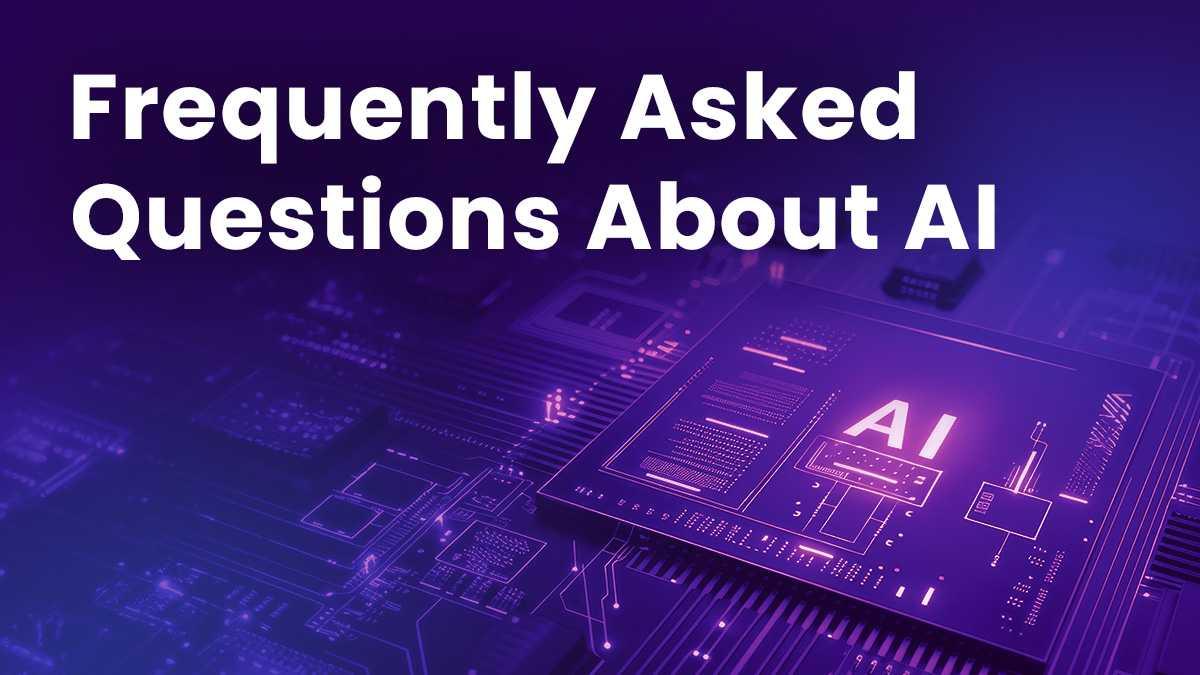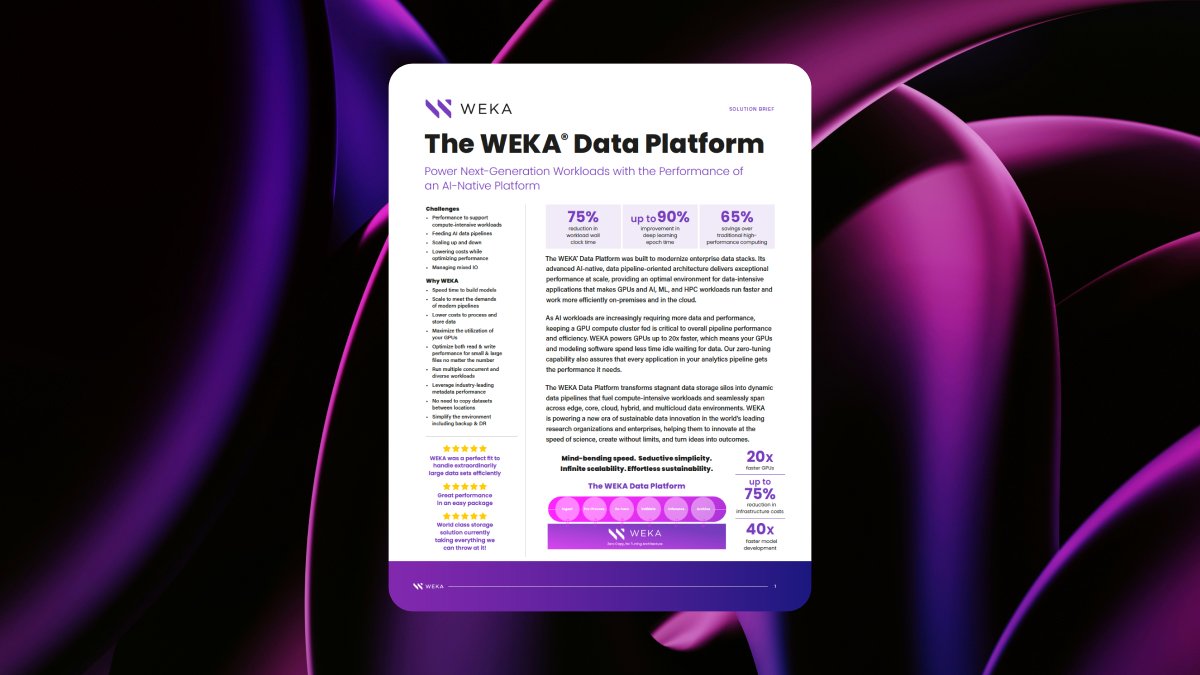AI FAQ: The Most Frequently Asked Questions About AI

What is AI?
Artificial intelligence (AI) technologies perform tasks that typically require human intelligence, like problem-solving, pattern recognition, and decision-making.
AI systems may rely on simple rule-based algorithms or more complex AI models that improve over time as they gain experience—even without additional human input.
What does AI stand for?
“AI” refers to the term artificial intelligence. Whether simple or more complex, all AI technologies perform tasks that would normally demand human intelligence.
When was AI invented?
When did AI start? A 1950 Alan Turing paper, “Computing Machinery and Intelligence,” provided the foundation for early AI research. Describing the “Imitation Game,” Turing set forth a standard for assessing how convincingly machines could imitate human behavior.
In what is now called the Turing Test, a judge blindly communicates with a human and a machine. If the judge can’t reliably tell the difference between the two subjects, the machine has met the test’s artificial intelligence standard.
Within a few years, AI was recognized as a field of study within computer science. At the 1956 Dartmouth Conference, researchers formally proposed that machines could simulate aspects of human intelligence.
How does AI work?
AI uses algorithms and models to process data, recognize patterns, and make decisions or predictions:
- Data input. AI systems consume text, images, videos, or other data.
- Processing. AI models use sets of rules or instructions called algorithms to process the data they consume and identify any patterns and correlations in it.
- Decision/output. Based on the patterns it finds, AI generates decisions, predictions, or other outputs, like classifying images or answering questions.
How does AI learn?
AI systems incrementally improve themselves with machine learning. This process allows them to improve their outputs by analyzing more data. There are three main types of machine learning:
- Supervised learning. The AI model is trained on data that is labeled with correct answers. It compares its output to the correct answers and adjusts itself to minimize errors.
- Unsupervised learning. The AI system finds patterns or relationships in unlabeled data on its own, grouping similar items together.
- Reinforcement learning. The AI system learns by trial and error, improving as it receives rewards or penalties based on its actions.
The best method depends on the specific task the AI system is designed for.
The basic difference between machine learning and AI is that AI systems mimic human intelligence by performing tasks in a specific way. Machine learning involves improving performance without explicit human programming. It is a tool for training AI systems.
What are the different types of AI?
There are three basic types of AI:
- Weak or narrow AI. These AI systems are designed for specific tasks such as facial recognition or language translation. Examples include Siri, Alexa, and generative AI systems like ChatGPT.
- Strong or general AI. These are a more theoretical type of AI system that could perform any mental task a human can do. In other words, this AI would equal human intellect, understanding, and reasoning across fields—and has yet to be developed.
- Superintelligent AI. This purely theoretical type of AI would take strong AI to the next level, surpassing human intelligence across all fields.
What is the most common type of AI used today?
Weak AI, which performs a narrow set of specific tasks well, is currently the most common type of AI used. ChatGPT is an example of a weak AI system.
While it can produce voluminous content quickly, ChatGPT is specialized and completes only specific tasks. It can only generate text-based answers to queries, and they are limited by its training data. It lacks the broad, human-like intelligence required to understand and perform multiple unrelated tasks that general AI would possess and cannot apply intelligence across diverse domains independently.
What is generative AI?
Generative AI systems create new content using algorithms, often based on machine learning models, to generate outputs such as text or images that resemble content created by humans.
How does generative AI work?
- Training data. The AI model is trained on large datasets such as images and text to learn patterns, structures, and styles.
- Generating output. Once trained, the model uses this knowledge to create new, original content that follows the patterns it has learned. For example, a generative AI system trained on images can produce new artwork or designs.
Types of generative AI models include:
Generative adversarial networks (GANs). These use two AI models—a generator and a discriminator—to create realistic outputs, often images.
Transformers. These are often used to create text, as in GPT models. They use attention mechanisms to understand context and generate coherent language.
Generative AI powers applications like ChatGPT, DALL·E which creates images, and music generation tools like Suno or Soundraw.
What is ChatGPT?
ChatGPT is a large language model (LLM). It uses deep learning to understand user inputs and generate human-like text in response.
ChatGPT is based on OpenAI’s generative pre-trained transformer (GPT) architecture and trained on a massive text dataset. It is optimized for a wide variety of text-based tasks, and can answer questions, write essays, generate code, and otherwise respond in a conversational format.
What is Google Bard?
The Google Bard AI system, which is now known as Gemini, is based on Google’s language model for dialogue applications (LaMDA) initiative. Bard generates human-like, conversational responses. It is similar to ChatGPT, but optimized for “chattier” tasks and real-time interaction.
ChatGPT is more generalized for use across a wide range of text-based tasks. Bard or Gemini, is more focused on conversational and search-related responses, real-time information, and facts.
What is AI used for?
AI performs tasks that are repetitive while reducing human error and increasing productivity to free up human labor for more creative or intellectually challenging work.
What are the common uses and applications of AI?
What are the common uses of AI? Common use cases of AI include:
- Healthcare. AI systems analyze images, help experts diagnose and personalize treatment, and accelerate new drug research.
- Finance. AI models detect fraud, automate trading, generate credit scores, and offer personalized recommendations.
- Retail. AI systems power customer service chatbots, manage inventory, and target marketing outreach.
- Autonomous vehicles. AI computer vision allows self-driving cars to navigate around obstacles and make decisions in real-time.
- Natural language processing (NLP). AI models drive virtual assistants like Siri and Alexa, language translation apps, and text generation platforms.
- Manufacturing. AI systems enable predictive maintenance and optimize production lines with advanced robotics.
- Search engines. AI models learn from the context and intent of search queries to provide more relevant results.
- Entertainment. AI systems enhance gaming experiences and make recommendations in streaming platforms such as Netflix.
Is AI bad for the environment?
AI can impact the environment in both positive and negative ways. Negative impacts of AI include:
- Energy consumption. Training large AI models, especially deep learning models, requires significant computational power and produces commensurate carbon emissions.
- Electronic waste. The hardware used for AI such as GPUs and servers can contribute to electronic waste, especially when devices rapidly become outdated.
- Resource intensity. The demand for data centers and cooling systems to support AI operations can strain local resources, including water and energy supplies.
However, there are many positive environmental impacts to AI to consider, too:
- Efficiency improvements. AI systems can optimize resource use to reduce waste and emissions in energy, agriculture, and manufacturing.
- Environmental monitoring. AI models can track deforestation, pollution, and climate change using sensor and satellite data.
- Smart grids. AI systems can enhance energy management and reduce reliance on fossil fuels.
Overall, the net impact of AI systems depends mostly on how they are developed and utilized.
What jobs will AI replace?
AI is likely to replace or significantly alter jobs that involve repetitive tasks or processing large amounts of data:
- Manufacturing jobs. Automated robots often perform tasks on an assembly line more efficiently than humans.
- Data entry and processing. AI systems can handle data input, processing, and analysis faster than humans while making fewer errors.
- Customer service. Chatbots and virtual assistants can manage simple inquiries and provide support, replacing human agents.
- Transportation. Autonomous vehicles or drones may replace many trucking and delivery jobs.
- Retail. Self-checkout and automated inventory management may reduce the number of cashier and stock clerk jobs.
- Finance and banking jobs. AI models can automate fraud detection, trading, and basic financial advising.
Even as AI technologies replace some jobs, they will create new roles managing, developing, and maintaining AI systems. Jobs that require human creativity, empathy, and complex problem solving will also remain.
What is the most noticing threat of AI?
Why is AI dangerous — or is it?
Despite human fears depicted in science fiction movies, the most apparent threats posed by AI are more mundane. For example, the potential for job displacement, discussed above.
Additionally, concerns about bias and discrimination in AI systems could perpetuate existing societal inequalities if not addressed. Misuse in areas like surveillance, deepfakes, and autonomous weapons also loom large.
What are some common benefits of AI technology?
However, the risks from AI technologies should be balanced against the benefits:
- Increased efficiency. AI systems can automate dangerous or repetitive tasks so humans can focus on more creative, intellectually challenging work.
- Enhanced decision-making. AI models can analyze vast amounts of data quickly to help make more informed decisions.
- Improved personalization. AI enhances user experience with smart recommendation systems in industries like e-commerce and entertainment.
- Advancements in healthcare. AI systems improve patient outcomes, assisting in diagnostics, personalized medicine, and drug discovery.
- Environmental monitoring. AI models help track climate change, optimize resource use, and support conservation efforts.
It is important to see AI (and any new technology) through a critical lens, while also acknowledging the substantial benefits across various sectors it offers.
What is the future of AI?
Experts predict that the future of AI will transform human culture:
- Continued integration. AI systems will integrate even more into everyday life, stretching into more industries and fields than ever before.
- Advancements in general AI. Research will advance toward more human-like general AI, although this is still a long-term goal.
- Ethical considerations, regulation, and policy. There will be a growing emphasis on safe and ethical AI technologies that are fair, accountable, and transparent. States and organizations will develop regulations and policies that govern AI use.
- Job transformation in collaboration with humans. While AI may displace certain jobs, it will also create new opportunities in AI systems management, oversight, and innovation. AI will increasingly work alongside humans, enhancing productivity and creativity rather than replacing human effort.
For more answers to FAQ AI and information on AI technologies, visit the WEKA Learning Center.





